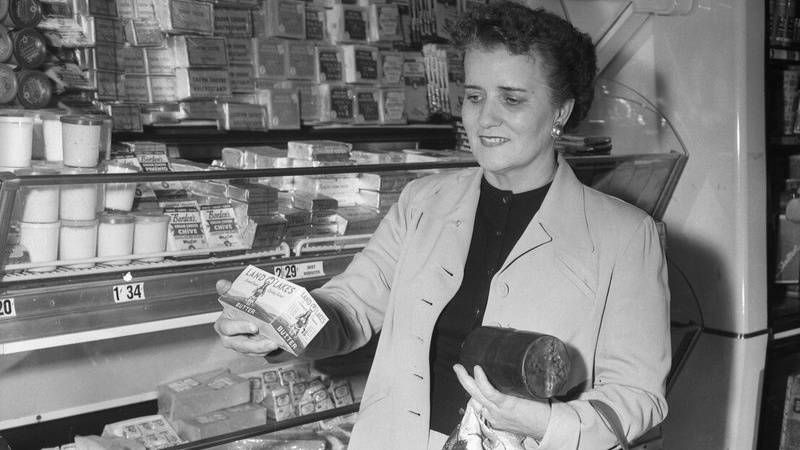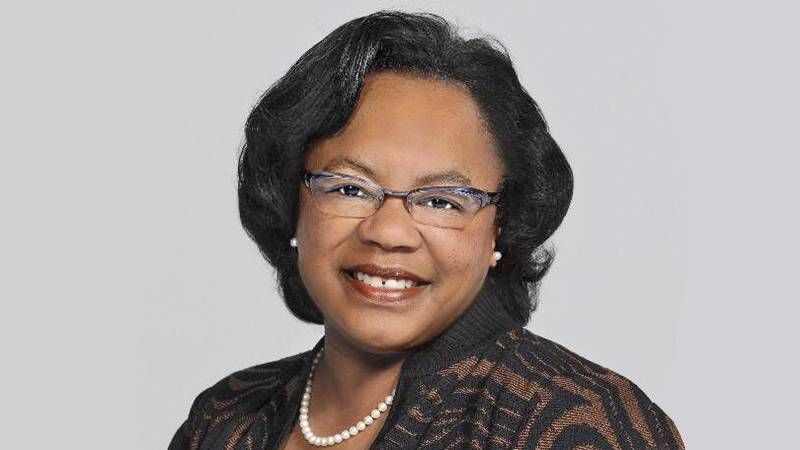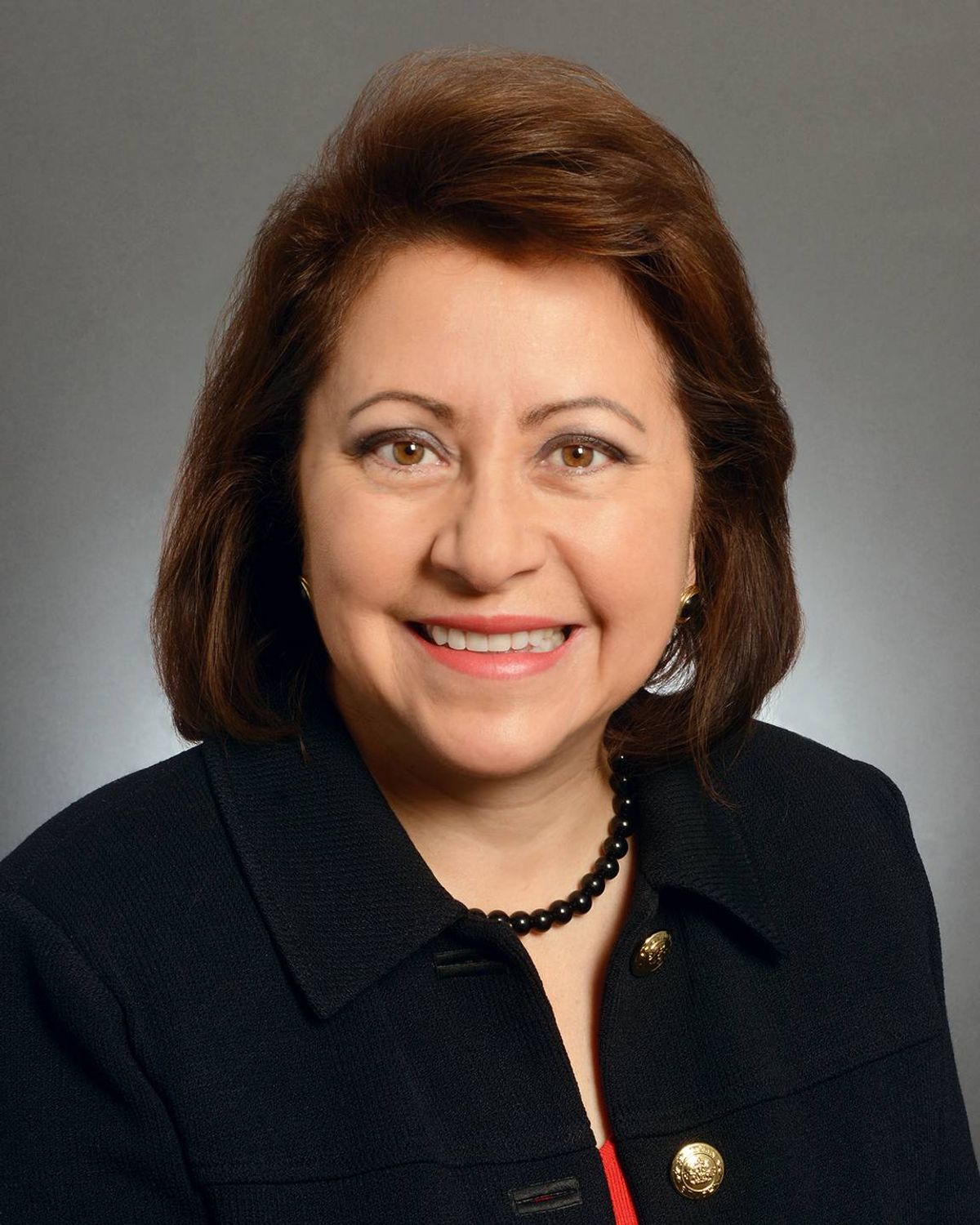Firsts for Everyone: A Timeline of the First Minnesota Women to Hold Office

Through the hard work of many, we won the right for women to vote. With the right to vote came power to make a difference in the world. Many difference makers have overcome significant hurdles to claim their place in Minnesota politics. This timeline explores the power of being "The First Woman" and the burdens endured in the process.
Cornelia Genevive Gjesdal "Coya" Knutson was Minnesota's first congresswoman. She served the House of Representatives from January 3, 1955 to January 3, 1959. After her first term, Knutson butted heads with the Minnesota DFL when she campaigned for Tennessee Senator Estes Kefauver, who ran for the Democratic nomination for President in 1956. DFL officials had already decided to endorse Illinois Senator Adlai Stevenson for their choice. Kefauver beat Stevenson in the Minnesota presidential primary, infuriating DFL leaders who then swore their revenge on Knutson.
Knutson is widely remembered today for the notorious "Coya, Come Home" letter supposedly written by her then-estranged husband, Andy, urging her to give up her seat and not seek reelection in 1958. The letter urged the congresswoman to abandon her re-election campaign and to "go home and make a home for your husband and son." It went on: "As your husband I compel you to do this...I'm sick and tired of having you run around with other men all the time and not your husband. I love you honey." The letter also stirred up rumors that Knutson was having an affair while in office, which ultimately cost Knutson the 1958 election.
A few years later, Knutson obtained a divorce from Andy. He died in 1969, due to his alcoholism, but not before admitting that he did not actually write the famous letter. Many former DFL chairmen assert, to this day, that the unfounded rumor of the affair undid Coya Knutson, not any organized effort to oust her.
Sharon Sayles Belton was the first African-American to serve as Mayor of Minneapolis, Minnesota, from 1994 until 2001.

In 1993, she announced her candidacy for mayor. With the help of three phone banks and a staff of 10, she was elected the first African American and the first woman mayor in the city's 140-year history. During her second term, the rate of serious crime dropped 16% by 1998, the best one-year reduction in 20 years. By the end of the decade, Minneapolis had increased property values and had its first increase in population since the 1940s, reversing a 50-year economic slide. The critics of Mayor Sayles Belton opposed the use of city subsidies for downtown development.
In 2001, a scandal surfaced that hurt Sayles Belton. She was an ally to the city's only African-American councilman at the time, Brian Herron. Herron resigned after admitting to taking bribes and extorting funds. The scandal broke just days before her re-election primary. Sayles Belton made a statement saying, "Brian Herron's conduct does not reflect on my work. The scandal is the scandal. People look at that and they wonder about politicians as a whole. But I've got a good track record." There were predictions speculating that voters punished Sayles Belton for not more forcefully condemning Herron, whom she endorsed in 1993 for the position she left to run for mayor. Her handling of Herron's scandal wasn't enough and Sayles Belton lost her party's endorsement, the primary and then proceeded to lose the election.
Patricia Torres Ray is the first Latina woman to serve in the Minnesota Senate. She was first elected in 2006, succeeding retiring Wes Skoglund, and was reelected in 2010, 2012 and 2016. Torres Ray was born and raised in Columbia. She was living there with her family until she met her husband, Jack, a student from the University of Minnesota, who had traveled to Colombia for a study-abroad internship. They married in 1987 and moved to Minnesota, Torres Ray learned English, worked various jobs and completed her education. Prior to her election to the Senate, Torres Ray worked as a State Program Administrator for the Minnesota Department of Human Services.

When she was asked about the public reaction to her running for Senate in an interview, Torres Ray explained, "When I ran [for Senate], it was really the beginning of a new wave of women running for political office. Especially for women of color, there were not as many. They [the constituents] were very surprised to see me because no one knew me. I am not a natural born citizen. I didn't grow up in politics from a family that had political influence or political power. There was a lot of doubt amongst the district that I would have the chance of winning. No one thought that I could win in my district, but I did." Torres Ray went on to try for a seat in Congress; however, she lost to Ilhan Omar. She still serves in the Minnesota Senate.
Ilhan Omar is the first Somali-American woman from Minnesota to be elected to Congress. She is also one of the first two Muslim women, along with Rashida Tlaib of Michigan, to serve in Congress. Omar was elected to the Minnesota House of Representatives in 2016 as a member of the Democratic–Farmer–Labor Party. She has been serving as the US Representative for Minnesota's 5th congressional district since 2019.

In June 2018, Omar ran for Minnesota's 5th congressional district after six-term incumbent Keith Ellison announced he would not seek reelection. Omar received the largest percentage of the vote of any female candidate for U.S. House in state history, and the largest percentage of the vote for a non-incumbent candidate for a U.S. House in state history.
In July 2019, President Trump tweeted that a group of congresswomen that consists of Omar and three other women of color who were born in the United States should "go back" to the "places from which they came." In response, Omar struck back on Twitter, saying that Trump was "stoking white nationalism." Later that July, at a campaign rally in North Carolina, Trump made a series of false and misleading claims about Omar, including allegations that she had praised al-Qaeda and argued for leniency with ISIS recruits. The crowd reacted by chanting, "Send her back, send her back." Omar has been the target of many conspiracy theories, death threats, and online harassment. Online harassment has happened even before she won her first election.
Although they are all different, these four still share the same experience of being the "First Woman." They hold power with these titles, because they are important. The burdens they carry with being a woman in politics are in no way easy. Their sacrifices will lighten the load of burdens that future women in power will have to carry and make more room for greater accomplishments. Hopefully, being the "first woman" to do something won't be a novelty in our society.
Watch the Minnesota Experience documentary, Citizen, which explores the multigenerational march of Minnesota women and all they hoped would come with the vote.
Editor's note: This story – and others in the collection, Then & Now: Reflections on Women's Suffrage – was written by a St. Catherine University student in the Public Relations Writing class held in the spring of 2020. The piece has been minimally edited to preserve the integrity of the student's perspective. We hope you enjoy discovering what the next generation of writers, historians and activists has to say about the impact of the women's suffrage movement then and now.

This story is made possible by the Arts and Cultural Heritage Fund and the citizens of Minnesota.
As Minnesotans look for ways to show their support for healthcare workers on the front lines of the COVID-19 pandemic, we took a look back in time to celebrate the contributions that four women – all named Ruth – made to the state's public health system.
Just 39 words in length, the 19th Amendment to the U.S. Constitution gave women the right to vote when it was passed on June 4, 1919 and enacted on August 26, 1920 – but its passage was fraught with decades of legal challenges and intense demonstrations in which women activists sometimes put their lives directly on the knife's edge. Explore a timeline contributions of Minnesota women to the passage of the 19th Amendment.
